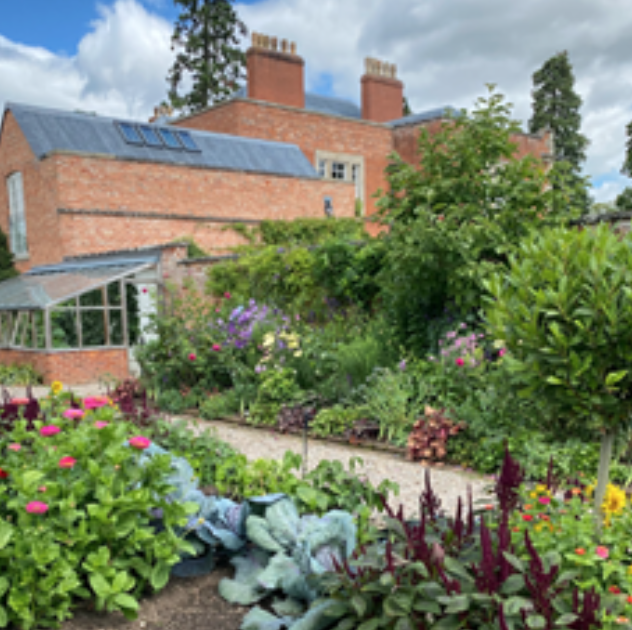
How do other gardeners do it? Planting design ideas from some English country gardens
SEO Space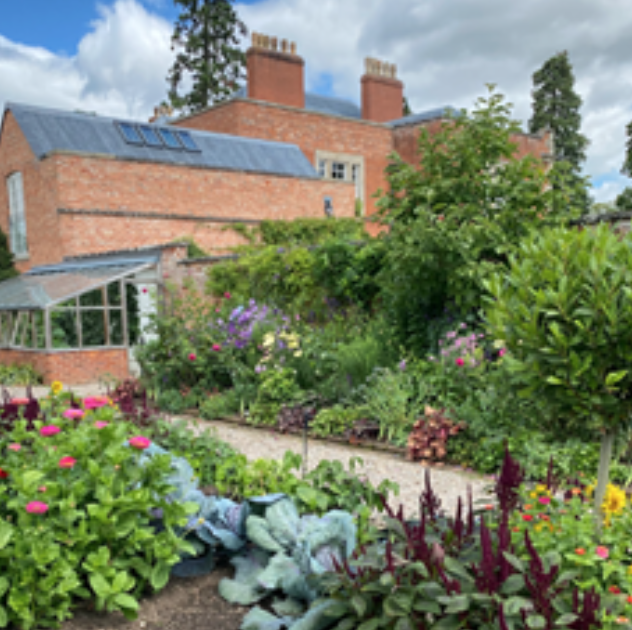
The productive potager at Morton Hall Gardens.
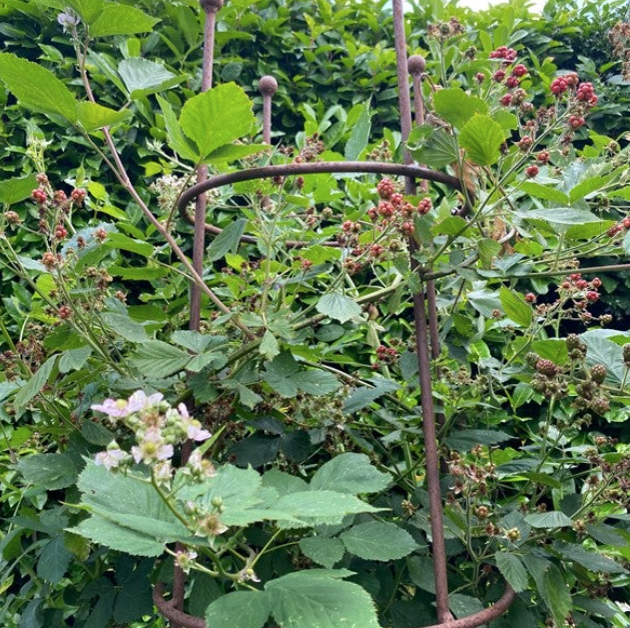
A blackberry thrives on a Munton’s circular obelisk.
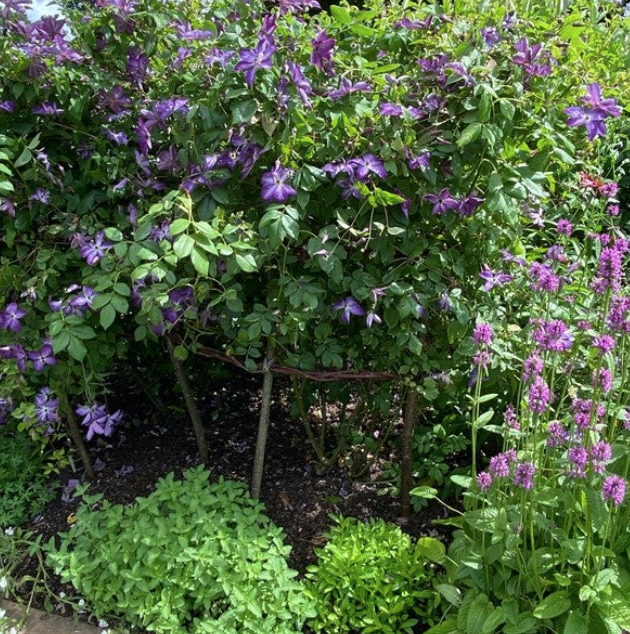
Clematis viticella sprawls over an early rose.
Over the summer I have made it my mission to visit gardens near us in Gloucestershire and the surrounding counties. They inspire me both by giving me new ideas of how to use plants and of new plant supports that we might develop for next season.
What have I learned from the gardens I have visited?
Morton Hall Gardens: seven acres of garden and park designed by Charles Chesshire and curated and maintained by Anne Olivieri and her team. The gardens are designed to provide a series of rooms in sympathy with the landscape round which the visitor can stroll. Recent restrictions mean that, currently, only small groups can visit but the great advantage is that the tours are conducted by Anne Olivieri herself and her knowledge and enthusiasm for the house and gardens make this a very special visit.
I marvelled at the planning that goes into every detail: three rose bushes planted together and held as a wide clump with woven willow are underplanted with clematis which is kept low inside the roses until they have finished flowering and then the clematis are released to sprawl over the roses and produce a mass of flowers in their turn; deliberate gaps left in the planting of the herbaceous borders into which seasonal planting is inserted (4000 tulips for spring and annual cleome, cosmos, nigella and nicotiana to fill out the summer borders).
In the vegetable garden I saw a wonderful example of creative planting – five of our 2.5 m circular obelisks provided support for domestic varieties of blackberry and tayberry (‘Easy to pick’ explained Dan, the head gardener)
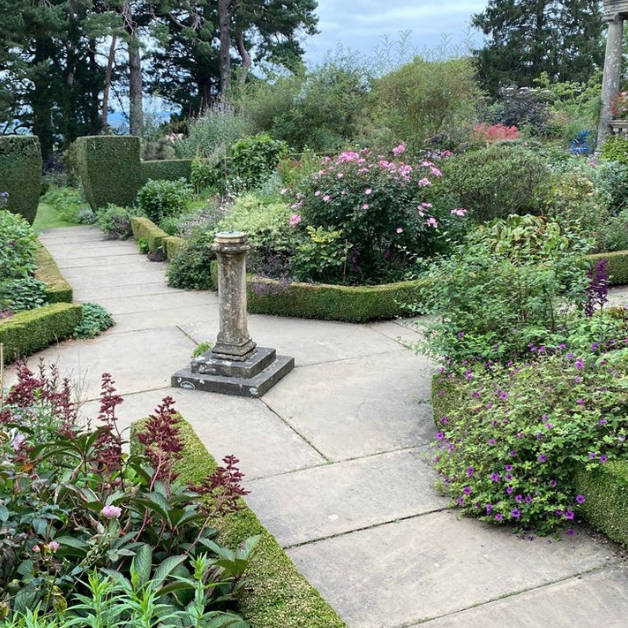
Traditional planting in the garden below the house.
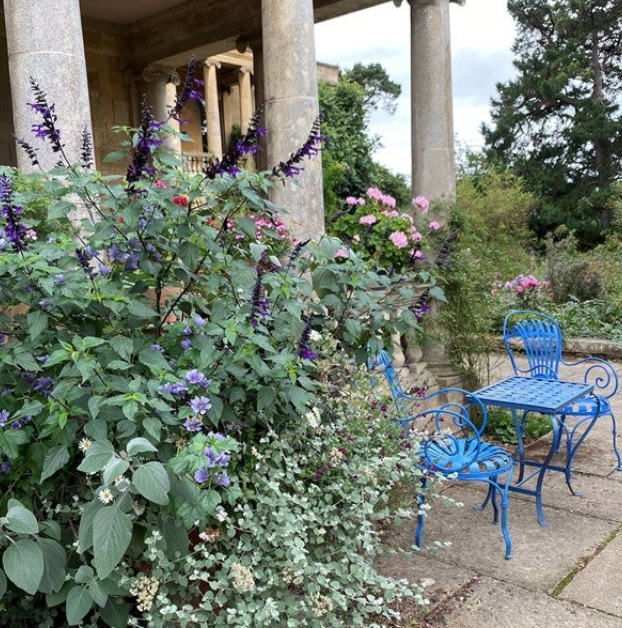
A stunning display in a planter sets off the brightly painted garden furniture.
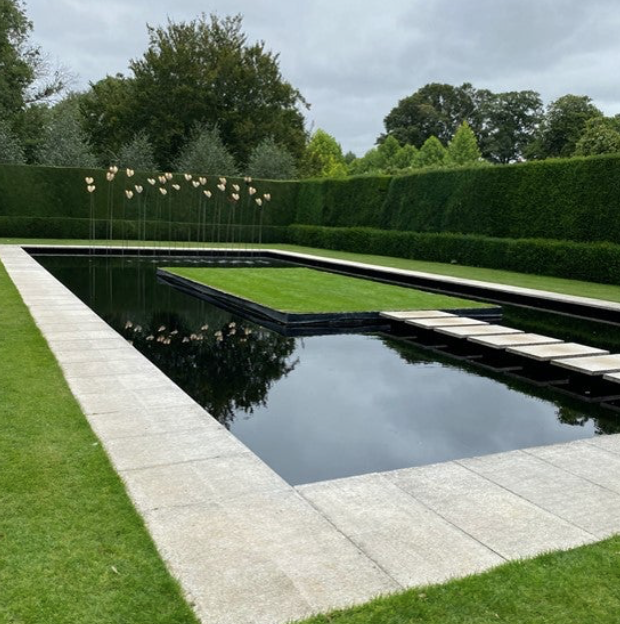
The elegant new pond garden replaced an old tennis court.
Rousham Park Garden: ask many of our best-known gardeners – including Monty Don – which is their favourite garden and many will respond Rousham. Rousham represents the first phase of English landscape design and remains almost as its designer, William Kent, left it. Kent was a painter, stage designer and architect who spent time in Italy, the influence of which can clearly be seen in the gardens at Rousham. He was one of the pioneers of what was known as the ‘New English Style of Landscape.’ The garden today still retains a quality of Englishness and unbroken harmony between house, garden and countryside with long vistas over the river Cherwell and idiosyncratic cascades and follies. I particularly enjoyed the walled garden with its orchard and parterre – working gardens can please the eye as much as the best tended herbaceous borders.
Kiftsgate Court Garden: I found Kiftsgate as uplifting as I found its close neighbour, Hidcote, disappointing. The garden is the product of three generations of women gardeners: Heather Muir who created the garden in the 1920’s with the help of her close friend, Lawrence Johnston of Hidcote Manor; Diany Binney who added to the garden from the mid fifties and Anne Chambers who has continued the evolution of the garden by adding new plants to complement the existing colour themes and updating the garden with stunning new features such as the water garden enclosed within its immaculately clipped yew hedge. There was no sign of the eponymous ‘Kiftsgate’ rose, a very vigorous single white, which would have finished flowering and had probably been cut back but every aspect of the garden brought new delight – and a masterclass in how to grow displays in pots!
Old Court Nurseries: I visited the home of the national collection of asters in search of plants for our stand at RHS Chelsea in September. Although Old Court is not a destination garden in the sense of the others I visited, I was delighted to be welcomed by Helen Picton and her collie, Maggie, who generously gave me as much time and advice as I needed to select my plants – and what a range of asters there is; beautifully grown and presented in the nursery. It’s a must-visit for fans of this large family of autumn-flowering perennials.
I hope that leaves you feeling as inspired as I am following my visits to these brilliant gardens!
Follow us on Pinterest: www.pinterest.co.uk/plantsupports
Follow us on Instagram: www.instagram.com/muntons_plant_supports
Follow us on Facebook: https://www.facebook.com/muntonstraditionalplantsupports
